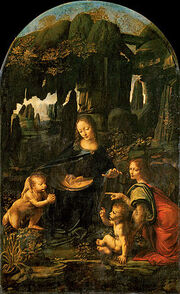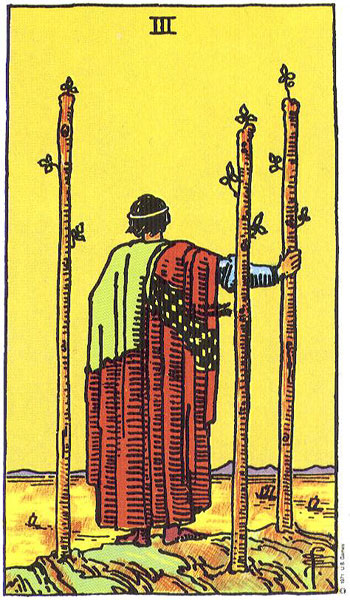(This is a response, but I wanted to include pictures, so I made a new post.)
In Part I of The Waste Land, Eliot references many different tarot cards, and I thought it would be interesting to look more into the traditional meaning of some of them.
-Drowned Phoenician Sailor (Eliot made this up)
The motif of the drowned sailor comes up later in the poem and is connected with Shakespeare's "eyes like pearls" quote from The Tempest and the dual nature of water as both a source of life and a bringer of death.
-Belladonna, the Lady of the Rocks (made up)
-Man with three staves (traditional)
Also known as the Three of Wands, it traditionally represents that success is coming in the future. Eliot says he connects him with the Fisher King.
Known as the "Wheel of Fortune," this card represents the cycle of time and presents an optimistic view of good things to come in the future.
-One-eyed merchant (made up)
The theme of blindness is important throughout the poem. There's a lot less to be said about this card.


-Hanged Man (traditional)
The Hanged Man tells us to let go of what you think you know and turn your views upside down (I think this accurately portrays the views of modernism, especially since Madame Sosostris says she DOESN'T see the Hanged Man. Eliot is trying to get people stuck in ennui to change their views.). It can also symbolize scapegoating and martyrdom, which seems to reflect the World War that had just occurred.
Sources:
https://fashionmagazine.com/culture/tarot-cards-meaning/
https://www.keen.com/articles/tarot/three-of-wands-tarot-card

















